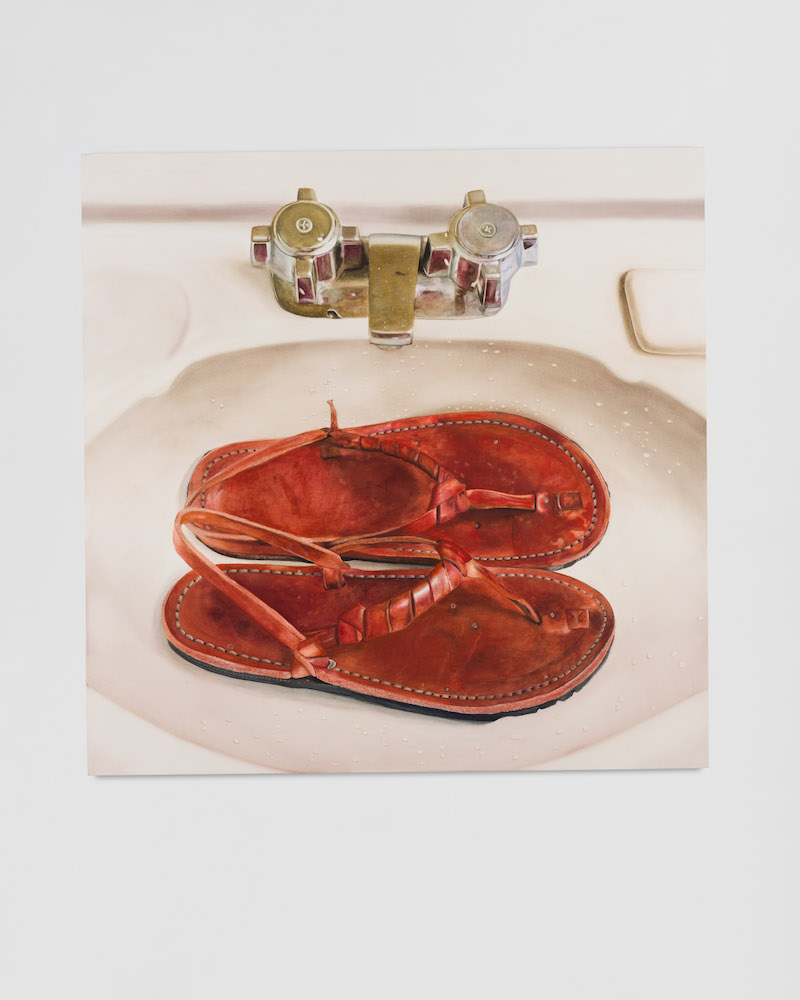There is something about watercolor that is intimate at any scale. The medium’s unforgiving nature sparks an urgency in its use, creating an immediacy in its organic textures, forcing the artist to build depth from layers and shallow pools that bounce the light around inside them, and making the executing of precision and small-bore details all the more impressive. It’s also a somewhat humble medium, with conventional associations in landscape painting and botanical surveyance sketching. But no matter how large-scale the work, watercolor retains the traces of the artist’s hand, their presence, their attentive engagement—and in the case of Nery Gabriel Lemus’ exhibition “The Poetics of Place,” that material quality serves and augments his narrative intentions admirably. That is, to honor and elevate domestic vignettes of the immigrant experience, and by extension his own lived experience.
The slightly surreal, charming and haunting painting Camine Ese Camino (2024) depicts a pair of worn leather sandals resting in a bathroom sink. The richness of the tanned color and surface of the traditional footwear, the tiny crisp water droplets on the white porcelain, the twisted reflection in the faucet, the sink itself a smooth and gentle hollow in which the shoes are cradled and cleansed—all of these speaks volumes as to Lemus’ gift for the watercolor medium. Across all the works in the show, a depth of palette, richness of surface, and precise yet expressive figurative manner do the same. But the image itself is also achingly evocative of curiosity and absence—of the shoes’ owner for a start, and how they were dirtied, and how carefully cleaned.
In several works, Lemus introduces traditional Guatemalan tapestries and textiles—a gesture which is, again, as with the watercolor, both materially significant and narratively symbolic. Textiles, especially traditional handmade ones, speak to the same careful techniques, the same evidence of a maker’s hand, and the same kinds of old-fashioned associations as watercolor. But in this juxtaposition, they are transformed into elements of abstraction and composition, as well as put forward to carry their own inherent stories of immigration, diaspora, memory, artifact, inheritance, and warmth. In this way, with textiles as both an allegory and a primary vessel, and watercolor as both a humble idiom and an approachable flex of mastery, Lemus does what he has always done—share the life stories of a community.


